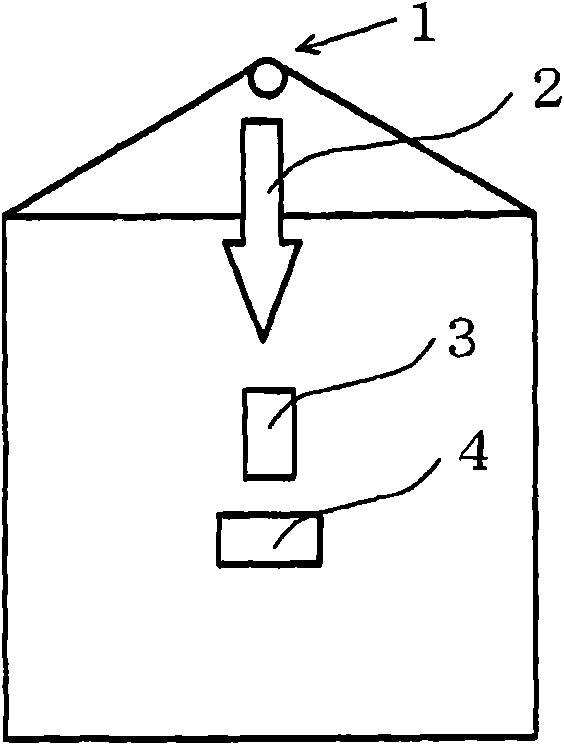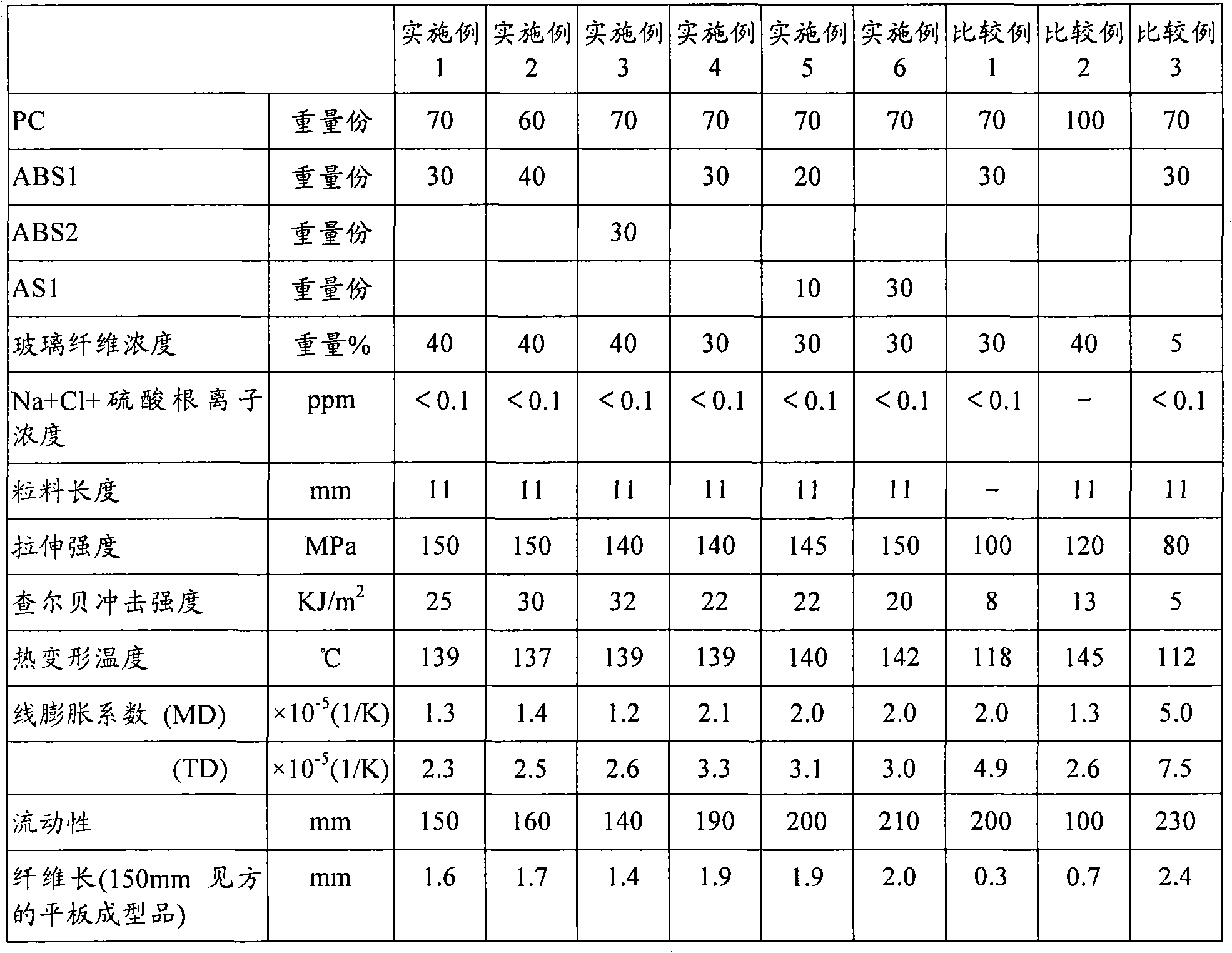Filament-reinforced thermoplastic resin composition
A technology for strengthening thermoplastic and resin compositions, applied in the field of long-fiber reinforced thermoplastic resin compositions, can solve problems such as difficulty in maintaining mechanical strength, and achieve the effects of excellent fluidity and excellent balance
- Summary
- Abstract
- Description
- Claims
- Application Information
AI Technical Summary
Problems solved by technology
Method used
Image
Examples
Embodiment 1
[0100] The glass fiber roving is drawn through a right-angle head that processes the passage of the continuous fiber into a wave shape, and at the same time, 70 parts by weight of PC as a thermoplastic resin in a molten state (280° C.) is supplied from an extruder connected to the right-angle head. and 30 parts by weight of ABS1, the resin is impregnated in glass fibers, then pulled out into strips through a shaping die, cooled, and cut to obtain pellets with a glass fiber content of 40% by weight and a length of 11mm . The obtained pellets were formed into samples for measurement of various physical properties by injection molding.
Embodiment 2
[0102] The glass fiber roving is drawn through a right-angle head that processes the passage of the continuous fiber into a wave shape, and at the same time, 60 parts by weight of PC as a thermoplastic resin in a molten state (280° C.) is supplied from an extruder connected to the right-angle head. and 40 parts by weight of ABS1, the resin is impregnated in glass fibers, then pulled out into strips through a shaping die, cooled, and cut to obtain pellets with a glass fiber content of 40% by weight and a length of 11 mm . The obtained pellets were formed into samples for measurement of various physical properties by injection molding.
Embodiment 3
[0104] The glass fiber roving is drawn through a right-angle head that processes the passage of the continuous fiber into a wave shape, and at the same time, 70 parts by weight of PC as a thermoplastic resin in a molten state (280° C.) is supplied from an extruder connected to the right-angle head. and 30 parts by weight of ABS2, after the resin is impregnated in glass fibers, it is pulled out into strips through a shaping die, and after cooling, it is cut to obtain pellets with a glass fiber content of 40% by weight and a length of 11 mm. . The obtained pellets were formed into samples for measurement of various physical properties by injection molding.
PUM
| Property | Measurement | Unit |
|---|---|---|
| Length | aaaaa | aaaaa |
Abstract
Description
Claims
Application Information
 Login to View More
Login to View More - R&D
- Intellectual Property
- Life Sciences
- Materials
- Tech Scout
- Unparalleled Data Quality
- Higher Quality Content
- 60% Fewer Hallucinations
Browse by: Latest US Patents, China's latest patents, Technical Efficacy Thesaurus, Application Domain, Technology Topic, Popular Technical Reports.
© 2025 PatSnap. All rights reserved.Legal|Privacy policy|Modern Slavery Act Transparency Statement|Sitemap|About US| Contact US: help@patsnap.com


